Michel, unless any of the other catalogue makers, lists four North Vietnam/Socialist Republic of Vietnam stamps that all have one thing in common. They were prepared by postal authorities but, were for various reasons, in the end not issued. In genuine condition they are extremely rare and elusive.
SICP member Frank Duering has written in detail about:
Michel I 1962, 45. Anniversary of the October Revolution
Michel II 1966, 20. Years Democratic Peoples Republic of Korea
and described how one can tell original from counterfeits. So far very little has been published about:
Michel III 1977, 2 Anniversary of Socialist Republic of Laos (Vietnamese and Laotian Women)
Michel IV 1977, 2 Anniversary of Socialist Republic of Laos (New State Seal of Laos)
This has to do with the fact that obtaining bona fide genuine samples are very hard to come by and only get offered once in “blue moon”. The author was able to obtain a genuine Michel III and IV over 20 years ago from a French dealer at multiples of the current catalogue value. Since then he has seen genuine stamps offered only very rarely Virtually all copies offered of these stamps anywhere (E-Bay, Delcampe and Auction Houses) are simply photo copies of the originals. In the process of copying small details in the original design will be lost and sometimes the color of the copy will not reflect the original. These changes become the tell-tales for the fakes.
In order to make it a bit easier for readers to differentiate originals from counterfeits here are the key differences:
Exhibit 1 shows a genuine Michel Nr. III (small design). Notice the crisp and clear delineation of the blue inscription at the top of the stamp and the designers name “Huy K.Hanh” outside of the stamp design at the bottom. Also, the color of the pink inscription at the bottom is identical to the pink in the stamp. The design on the green sleeve of the left figure is clear. Finally the pink back ground of the stamp is pretty evenly colored, apart from a highlight just above and below the Vietnamese flag.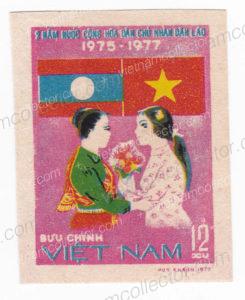
Exhibit 2 shows a fake Michel Nr. III. Here the blue writing on top is barely legible. The designers name at the bottom is also blurry . The design of the green sleeve is hardly visible. Also, the pink color is visibly darker and redder than on the originals. The background color looks very cloudy und uneven. The Laotian flag is not delineated and almost blends into the back ground.
Exhibit 3 shows a genuine Michel Nr. IV (small design). The writing on top and the “1975-1977” is in pink (not dark red) and it is crisp and clear. The same is true for the light blue name of the stamp designer at the bottom. The yellow writing at the bottom of the seal is clear and legible. The light blue back ground is evenly colored and the red in the seal is colored in a lighter red.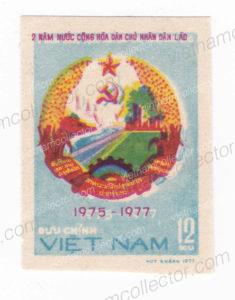
Exhibit 4 shows a fake Michel Nr IV. The writing on the top is less clear and in dark red (as compared to pink in the small originals). The light blue name of the designer at the bottom is hardly legible. The yellow writing at the bottom of the seal is blurry. Overall the light blue back ground is more blotchy and uneven than in the originals.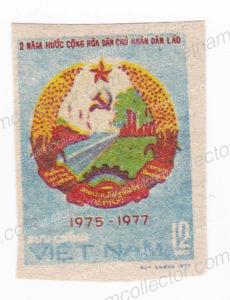
Recently the editor was able to acquire blocks of four from a well known Vietnamese vendor. Blocks of four are the largest known unit of these stamps and any unit larger than one is extremely scarce. The multiples also document that the production of these stamps was already well on its way as it had already been replicated to assemble sheets. The stamps were prepared in two different sizes. The smaller format is 26.5mm by 35mm ( ignoring the name of the stamp designer) and the larger format is 31.0mm by 41.5mm. Also, the writing on top of the larger design “1975-1977” is printed in red and not pink as in the smaller design
Here are the blocks of four of the smaller design
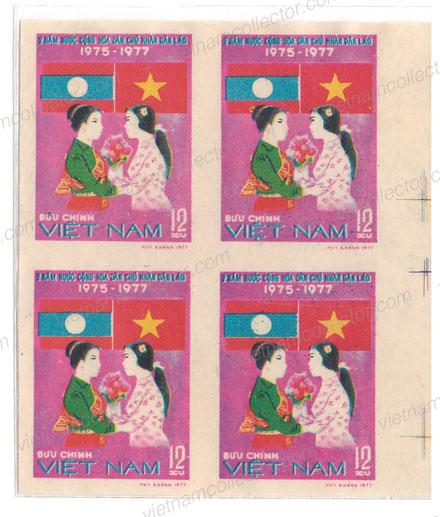
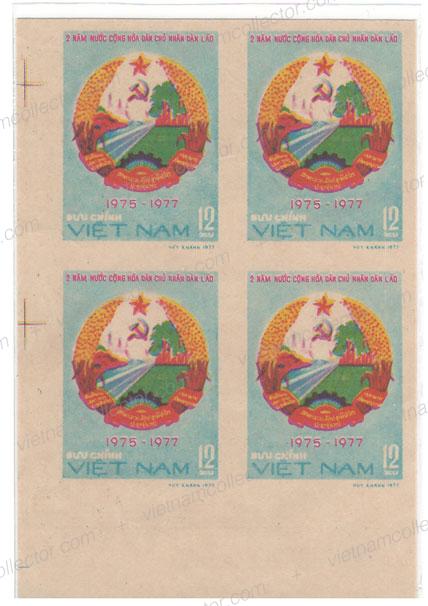
and here are the blocks of four of the larger design
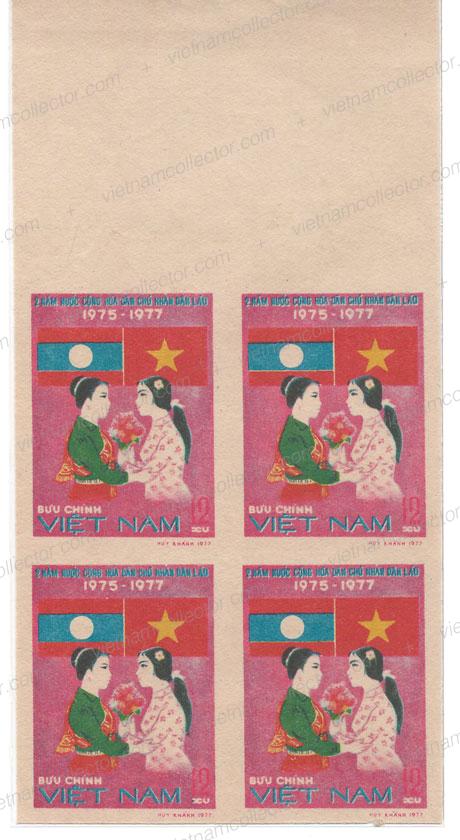
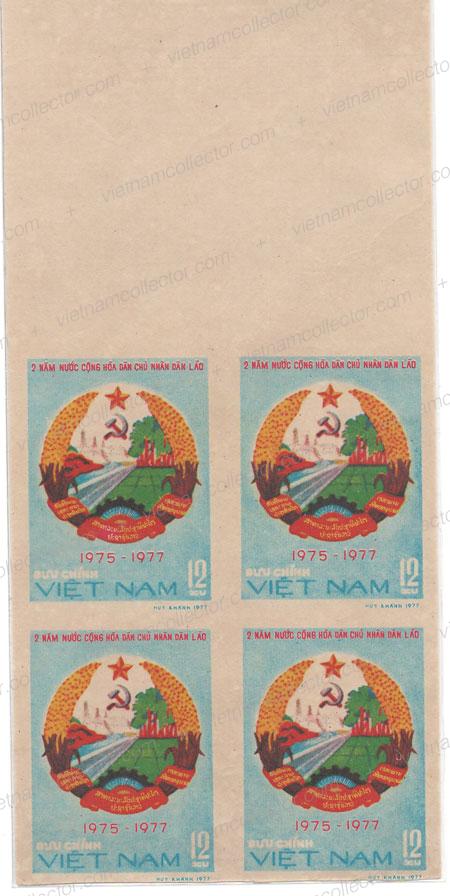 Here are the single genuine stamps that are from the Klewitz collection next to a block of four of the larger design. This way one easily see the different sizes:
Here are the single genuine stamps that are from the Klewitz collection next to a block of four of the larger design. This way one easily see the different sizes:
When comparing the size of the smaller and larger stamp Nr. IV with other Vietnamese stamps issued in 1977 and 1978 it becomes clear that the respective design size is identical to the size of definitive stamps (smaller design) and commemorative stamps (larger design) around that time. This means the two different sizes were simply options that had been prepared for the final decision makers in the postal authorities.
Some philatelist have suggested that NVN Michel Nr. III and IV were simply a private production for a stamp exhibit in Vietnam but this is definitely not the case. Below are scans of the internal paper work (courtesy of Le Dinh Minh Giang) of the Postal Administration in which the Assistant Director for the publication of stamps advises the stamps designer “Trần Duy Khánh” on August 1st, 1977 to bring the printing template of the stamps to the printing works. The Assistant Director also writes about the importance and reason for the stamps issuance. Unfortunately nothing in this paper works deals with the reasons that the stamps were ultimately not issued. The issuance date indicated in the letter states December 2nd, 1977 so, one day earlier than what the Michel catalogue indicates.




While Michel have to be commended for the fact that these stamps are included in its catalogue, the publisher is deficient in properly valuing them (currently at €150 per stamp). This is hardly surprising when one considers the very limited staff Michel employs to up-date their catalogues. Also, Michel Nr. I through IV come up so rarely for sale that there simply aren’t enough public sales records that would allow for more accurate pricing. Most of these items are passed in private transactions from one insider to another where both parties know of the scarcity and value of these stamps, so the proper pricing in Michel should be either moved closer to the price for Michel Nr. I and II (currently €1,000 per stamp) or simply state: -.- (pricing not possible).
The author would be curious how many genuine stamps are in the possession of the readership (write using the communication feature of this website).
The Laotian counter part to this stamp basin fact issued. Here is the min sheetlet that was released in 1977: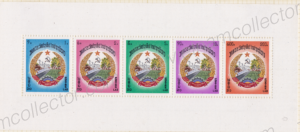


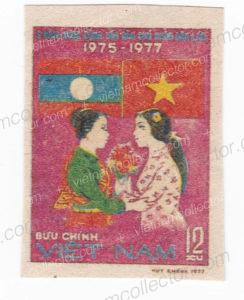


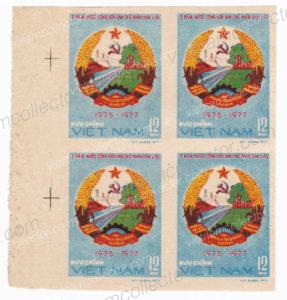
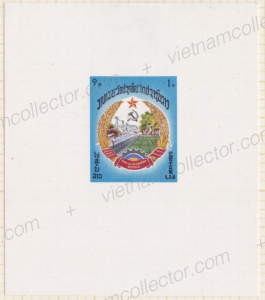
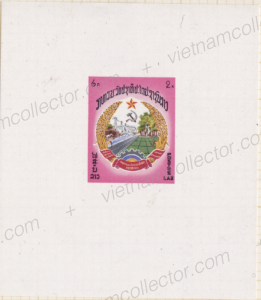
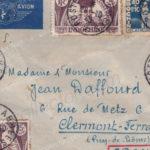

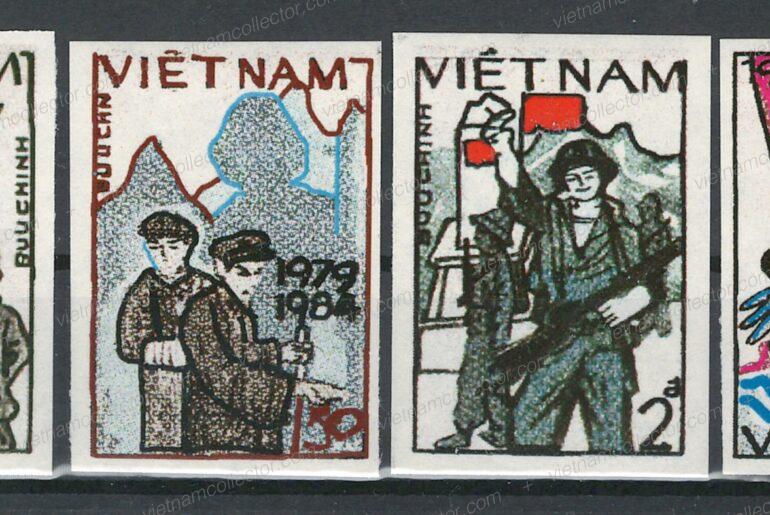
Comments are closed.